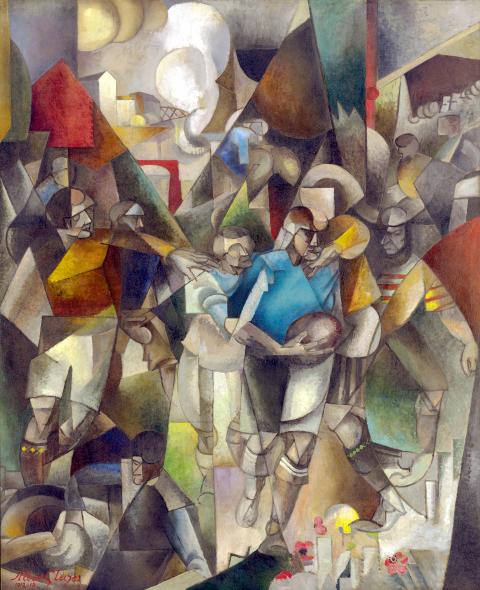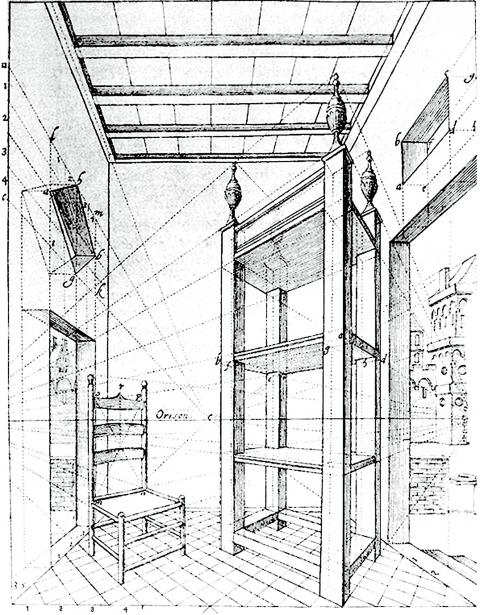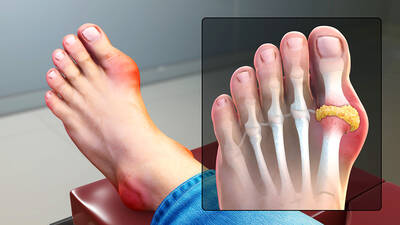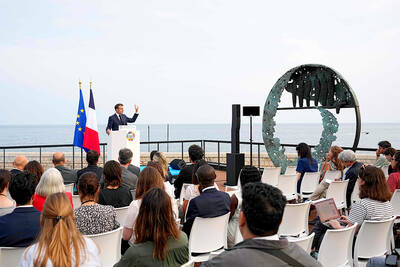In the words of art critic John Berger, Cubism is the most significant revolution in art since the Renaissance. This is no exaggeration.
Linear perspective, which matured during the Renaissance and developed with the help of geometry, allowed humans for the first time in history to render precisely what we see with our eyes onto a two-dimensional surface. The trompe-l’oeil illusion can make the depicted as tangible and the space as real as if we could just walk into it.
In this realistic pictorial tradition that has long been taken for granted, paintings like Football Players (photo 1) might seem unimaginable and confusing. (We can start by finding out how many people are depicted in this picture.) In this seemingly chaotic picture by Albert Gleizes (1881-1953), a major figure of the Cubist movement, we can spot a player in blue top running with a rugby football. The player on the left grabs the shoulder of another player, as if trying to block his attack, while another player in the lower left corner falls on the green turf. At the top right of the picture you can see the spectators. Watching the fierce attack and defense in the field, we can almost hear the crowd cheering.

Photo: Wikimedia Commons
照片:維基共享資源
In a single picture, we can see a series of actions, an exciting game full of twists and turns — and all these are supposed to be unfolded in time.
At the top of the screen, we see houses along a road, a bridge, and something like white clouds or mist on the horizon. These things are supposed to be part of the background, but they are not presented with distance and depth of field that could have been created via linear perspective (photo 2, 3). Instead, the “background” seems to be flattened like a pattern and placed on the same layer as the foreground and subjects.
Football Players demonstrates the mobile perspective and the principle of simultaneity proposed in the On Cubism, written in 1912 by Gleizes and Jean Metzinger (1883-1956). It is not a picture captured in a single moment from a single perspective — like a photograph does — but a combination of different aspects of things in constant movement.

Photos: Wikimedia Commons
照片:維基共享資源
Scrolls, a Chinese painting format, are also good at dealing with sequential time and space. The painting Along the River During the Qingming Festival is a well-known example (see Bilingual Arts on March 25, 2017). Qingming is like a long strip of film that consists of sequential scenes, and the viewer can decide where their gaze lingers. However, Football Players is like a messy pile of film, in which we have no choice but to view scenes from a different time and space at the same time.
Ever since the proto-cubist Les Demoiselles d’Avignon (1907) (photo 4), by Pablo Picasso (1881-1973), and the coining of the term Cubism in 1911, the movement has continued to change the way we see the world.
(Lin Lee-kai, Taipei Times)

Photos: Wikimedia Commons
照片:維基共享資源
藝評家約翰.伯格曾說,立體派是自文藝復興以來最重要的藝術革命。此話並不為過。
文藝復興時期藉助幾何學所發展成熟的線性透視,讓人類首次能夠在平面上建構出如肉眼所見的空間,這種如真的幻覺效果,讓觀者彷彿身在其中。
在線性透視成為理所當然的傳統後,出現了像《足球運動員》【圖一】這樣的畫面,的確令人迷惘。(我們可以先試著找找看,圖中到底有幾個人。)立體派大將格列茲(一八八一~一九五三)這看似紛亂的畫面中,穿藍衣的球員抱著橄欖球奔跑,左方的球員抓著另一人肩膀,似正阻止他進攻,畫面左下角另一球員跌倒在綠色草皮上。畫面右上方則可見到觀眾──隨著場內激烈的攻防,我們彷彿可以聽到場外觀眾的喧騰。

Photo: Wikimedia Commons
照片:維基共享資源
在這單單一個畫面,我們可以看到一連串動作、一場扣人心弦的比賽。而這些動作,原本是在時間中展開的。
在畫面上方可見沿路的房屋、一座橋,以及似天邊雲朵的白霧。這些屬於背景的事物,卻失去了原本可藉由線性透視法創造出的景深【圖二、三】,像圖案般平平地貼上畫面,使得背景與前景(人)像是在同一層表面上。
《足球運動員》體現出《立體派宣言》(一九一二年由格列茲與梅金傑所撰寫)所闡釋的移動視角和同時性原則,它所呈現出的,並非如照片般在單一時間、由單一視角所捕捉的畫面,而是事物在不斷運行中不同面向的組合。
「長卷」的中國繪畫形式,也擅於處理連續的時間與空間,《清明上河圖》即為著名的例子(參見二○一七年三月二十五日「雙語藝術」單元)。《清明上河圖》像是拉長的電影膠捲,由一格格景象接續起來,觀者可自行決定在哪一個畫面定格,悠遊其中;但《足球運動員》卻像是亂揉成一堆的底片,強迫我們同時看到不同時空的景象。
自一九○七年畢卡索(一八八一~一九七三)的《亞維儂的姑娘》【圖四】開始,其衍生出的新風格至一九一一年正式名為「立體派」,我們看世界的方式便要開始經歷巨大的改變。
(台北時報林俐凱)

William I of Prussia, a passionate painter, often autographed his works with “tormentis pinxit” — “painted in pain” — as a nod to his struggles with gout. Other historical figures like King Henry VIII of England and Benjamin Franklin also suffered from this “disease of kings,” which was common among people indulging in luxurious diets. Gout is primarily caused by high levels of uric acid in the body. Uric acid forms as the body breaks down purines, which are found in foods like red meat and seafood. Normally, the kidneys filter out uric acid. However, if the body produces

The UN Ocean Conference wrapped up in Nice, France on Friday last week with world leaders taking major steps toward marine protection and vowing a showdown when nations meet to negotiate rules for deep-sea mining next month. But a lack of funding pledges and the total omission of fossil fuels disappointed some observers. The summit was just the third — and largest yet — dedicated entirely to what the United Nations calls an “emergency” in the world’s oceans. The High Seas Treaty, or Global Ocean Treaty, is also known as the Agreement under the United Nations Convention on the Law

A: The National Palace Museum (NPM) has launched an exhibition, titled “From Impressionism to Early Modernism.” There are 81 masterpieces from the Metropolitan Museum of Art on display now. B: The exhibit, held to celebrate the NPM’s centennial, must be so spectacular. A: It includes artworks by 38 artists, such as Renoir, van Gogh, Cezanne, Matisse and Gauguin. B: The Fubon Art Museum has also launched an exhibit featuring a number of artworks of Impressionism, including Monet’s “Water Lilies.” A: And the New Taipei City Art Museum just had its grand opening, so there are even more exhibitions

A: What exhibitions are you going to see this summer? B: The 100% Doraemon & Friends exhibit is set to open on June 28. A: The news says there will be a 12-meter-tall giant Doraemon model at the Huashan 1914 Creative Park. B: The One Piece Carnival will set sail on the same day. A: And the D’festa Taipei 2025 – featuring exclusive content from K-pop supergroups such as BTS, NCT and Twice – is also set to begin next Friday. Isn’t that cool? A: 今年夏天還有什麼展覽可看啊? B: 「100%哆啦A夢 & Friends特展」即將在6月28日開幕。 A: 新聞說在華山1914文創園區會場,還有12米高的巨型哆啦A夢呢! B: 航海王「One Piece歡樂派對嘉年華」也將在同日啟航。 A: